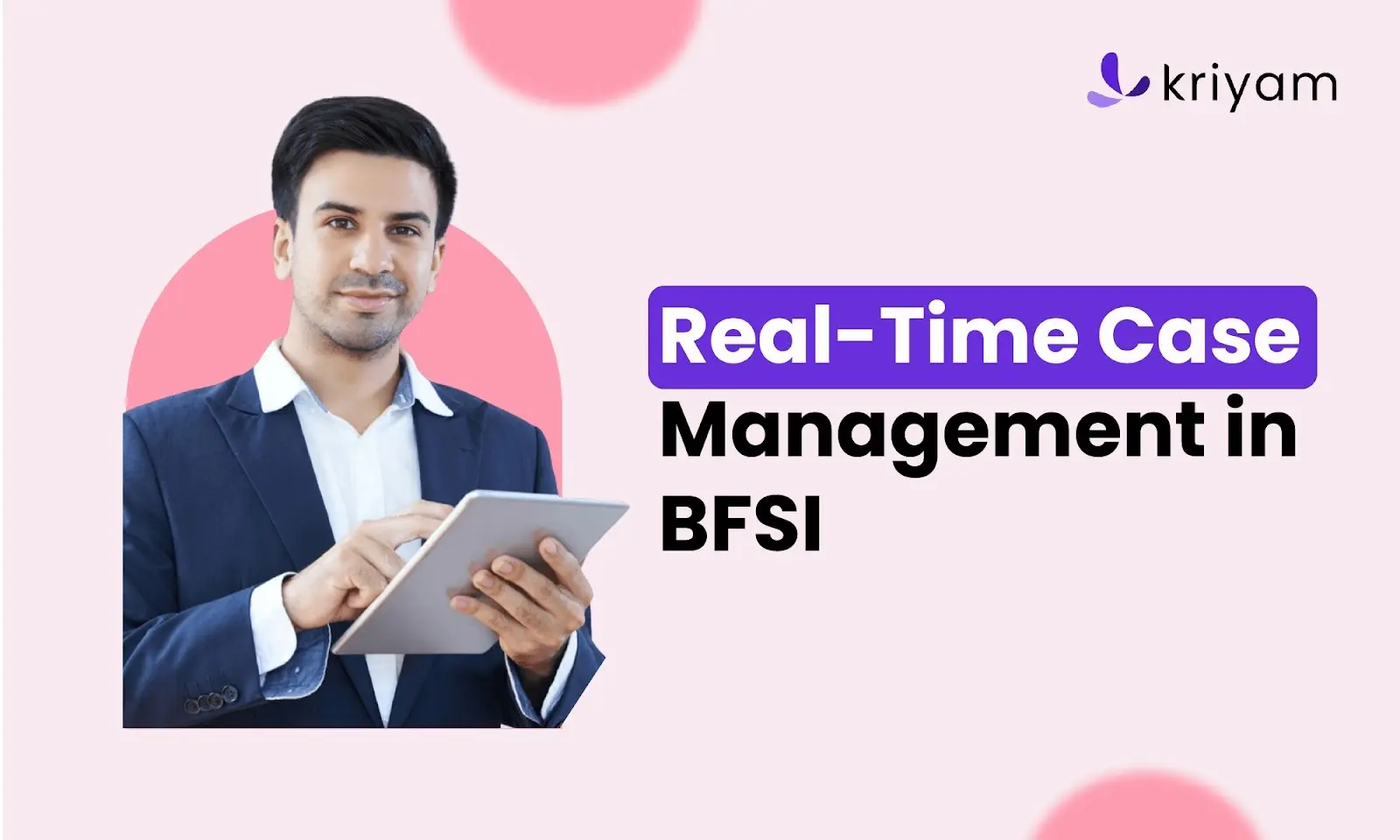Insurance

Fraud Risk Mitigation Strategies To Protect Your Insurance Business
Insurance fraud is not only an increasing threat, but also one that sets the industry back by billions of dollars annually. Fraudsters always use new tricks on how to play the system—one way or another, whether via false claims, faked collisions, or phony identities. For insurers, it's never merely a loss of money but also a need to safeguard their reputation and sustain customer confidence. With the digitalization of business, the hazard of fraud has become even trickier. That’s why having strong fraud risk mitigation strategies is no longer optional, it's a necessity. In this blog, we’ll explore practical and effective ways insurance companies can tackle fraud and keep their businesses safe.
What are Fraud Risks & Why Mitigation of Fraud Risks is Crucial?
Insurance fraud risks present financial and operational threats through acts of deceit, such as false claims, exaggerated losses, and planned accidents. Examples of this generally include falsifying information on application forms, staging bogus injury claims, or underreporting risks as a way of enabling the payment of lower premiums. They also call for urgent measures to protect both businesses and policyholders against this scourge.
As a Chief Risk Officer or any Insurance sector professional, protecting against fraud demands your immediate focus because it secures a company's financial base while earning stakeholder and customer trust. Fraud can destroy profitability while simultaneously harming a business's reputation if appropriate fraud risk mitigation measures do not exist.
There are few core principles of fraud risk mitigation that form the foundation of a robust defense strategy which are provided below. Further, we will explore the key components of a fraud risk mitigation strategy.
![Core_Principals_of_Fraud_risk[1].webp](https://strapi.kriyam.ai/uploads/Core_Principals_of_Fraud_risk_1_d6c71dd169.webp)
Components of a Strong Fraud Risk Mitigation Strategy
An entire fraud risk reduction system functions through several essential elements. A combination of appropriate fraud mitigation strategies along with insurance process automation proves successful in lowering fraud effects and blocking upcoming dangers.
Here are the components of strategy:
Risk Assessment
Any effort to combat fraud requires a proper assessment of the individual risks that your insurance company encounters. Assessing fraud begins with a detailed risk assessment. For example, predictive analytics can help analyze historical claims data and find patterns associated with fraud. This describes possible vulnerabilities like some high-risk regions or types of policies, to target specific preventive efforts.
Data Monitoring
Insurers detect possible fraudulent conduct through ongoing observation of their transactional as well as operational datasets which reveal abnormal data points. Insurance companies monitoring data in real time become able to spot fraudulent activity early before perpetrators create additional harm to the organization.
Establish Clear Policies
Companies need to create complete policies and procedures which address anti-fraud measures and response protocols. The policies must specify exact procedures to recognize cases of fraud as well as reporting channels and investigation procedures. Organizational anti-fraud culture becomes stronger through effective distribution of protocols to all members of the organization.
Data Encryption and Protection
Company and customer sensitive data must be kept secure because this prevents fraud risks from materializing. Organizations that use encryption protocols together with data protection measures safeguard both personal and financial information from unauthorized access thus minimizing identity theft events and data breaches.
User Authentication
The implementation of biometric authentication methods alongside multi-factor authentication (MFA) protocols serves to block fraudsters who want to obtain sensitive system access. The tools improve security access functions by allowing only authorized personnel to access important information.
Employee Training
Workers act as the foundation for fraud detection while protecting the organization from illegal activities. Staff requires regular training to stay updated about fraud detection methods as well as to develop a workplace environment that is sensitive to fraud. An organization with trained employees finds it easier to detect potential fraudulent behavior in its early stages.
Implement Fraud Prevention Tools
Modern fraud detection tools include predictive analytics, machine learning, and transaction monitoring systems. Those systems within this class use AI and machine learning to catch suspicious activities occurring in real-time, augmenting detection and response.
Regular Security Audits
Regular audits of security are essential since AI-based investigation analysis allows for discovering vulnerabilities that don't comply with security standards, therefore enabling a transparent investigation process for any gaps that need addressing in fraud prevention techniques.
Fraud Risk Investigation
Insurance fraud investigation uses behavioral analytics and AI-driven anomaly detection to identify irregularities in claim data, while field investigations involve investigators physically visiting the site or talking to various parties to verify claims. This multi-faceted approach provides for a thorough investigation, often catching discrepancies that digital analysis on its own might miss.
Incident Response Planning
Fast effective responses during fraud incidents become possible through the implementation of incident response plans by insurance companies. The strategy needs to include step-by-step procedures for managing suspicious incidents alongside investigation operations and recovery protocols to help the company handle situations efficiently.
Continuous Improvement
The process to minimize fraud must stay active. Insurance organizations must perform ongoing monitoring of their anti-fraud strategies to prevent fraudsters from outsmarting them. Insurance companies can maintain their operations through time by establishing feedback systems that lead to continuous improvement against changing fraud methods.
How to Mitigate Fraud if It Happens?
Even with preventive measures in place, frauds can happen. When that happens, it’s important to move quickly to minimize the damage and avoid complications. Technology can help in making sure that these prospective frauds are investigated thoroughly and decisions are made swiftly.
Kriyam.ai empowers efficient fraud detection for institutions in the BFSI sector by incorporating robust customer verification and fact checks across different stages of the customer journey . Making use of AI capabilities, Kriyam.ai not only improves the effectiveness of field investigations with face matching, document forgery checks but the automations in the platform help cut down human effort in fraud detection and allow increased accuracy with particular decision-making.
Final Thoughts
Proper implementation of selected measures enables insurance companies to manage their fraud-related threats effectively. Insurance companies can shield their business operations together with customer trust through the implementation of strong fraud risk mitigation tools & techniques including automatic investigation claim systems. The need for strong fraud prevention measures for emerging fraud methods becomes essential to secure a resilient business in the digital world.
People Also Ask (FAQs)
Q1: What is fraud risk mitigation?
Fraud risk mitigation refers to the processes and strategies implemented by companies to prevent, detect, and respond to fraudulent activities. It involves identifying potential risks, using prevention tools, and having plans in place to handle fraud incidents.
Q2: Why is fraud detection important in insurance?
Fraud detection is crucial because it helps insurance companies prevent financial losses, maintain profitability, and protect their reputation. Without it, companies risk losing significant amounts of money to fraudulent claims and activities.
Q3: What is the role of employee training in fraud risk mitigation?
Employee training plays a key role in fraud risk mitigation by equipping staff with the knowledge to spot suspicious activity and understand company policies. Well-trained employees are essential for early fraud detection and prevention.
Q4: How can a fraud risk management system reduce fraud risk?
A Fraud Risk Management System reduces fraud risk by detecting suspicious activities, analyzing transaction patterns, enforcing compliance rules, and automating fraud prevention measures. It uses AI, machine learning, and real-time monitoring to identify anomalies and block fraudulent transactions before they occur.
Kriyam.ai Content Team
5th March, 2025
Latest
LATEST BLOGS
Automation
Top 5 Best Field Service Management Software in 2025
Best Field Service Management Software
Shreyas R
27th November, 2023
FEATURED
Automation
Top 5 Best Field Service Management Software in 2025
Best Field Service Management Software
Shreyas R
27th November, 2023





